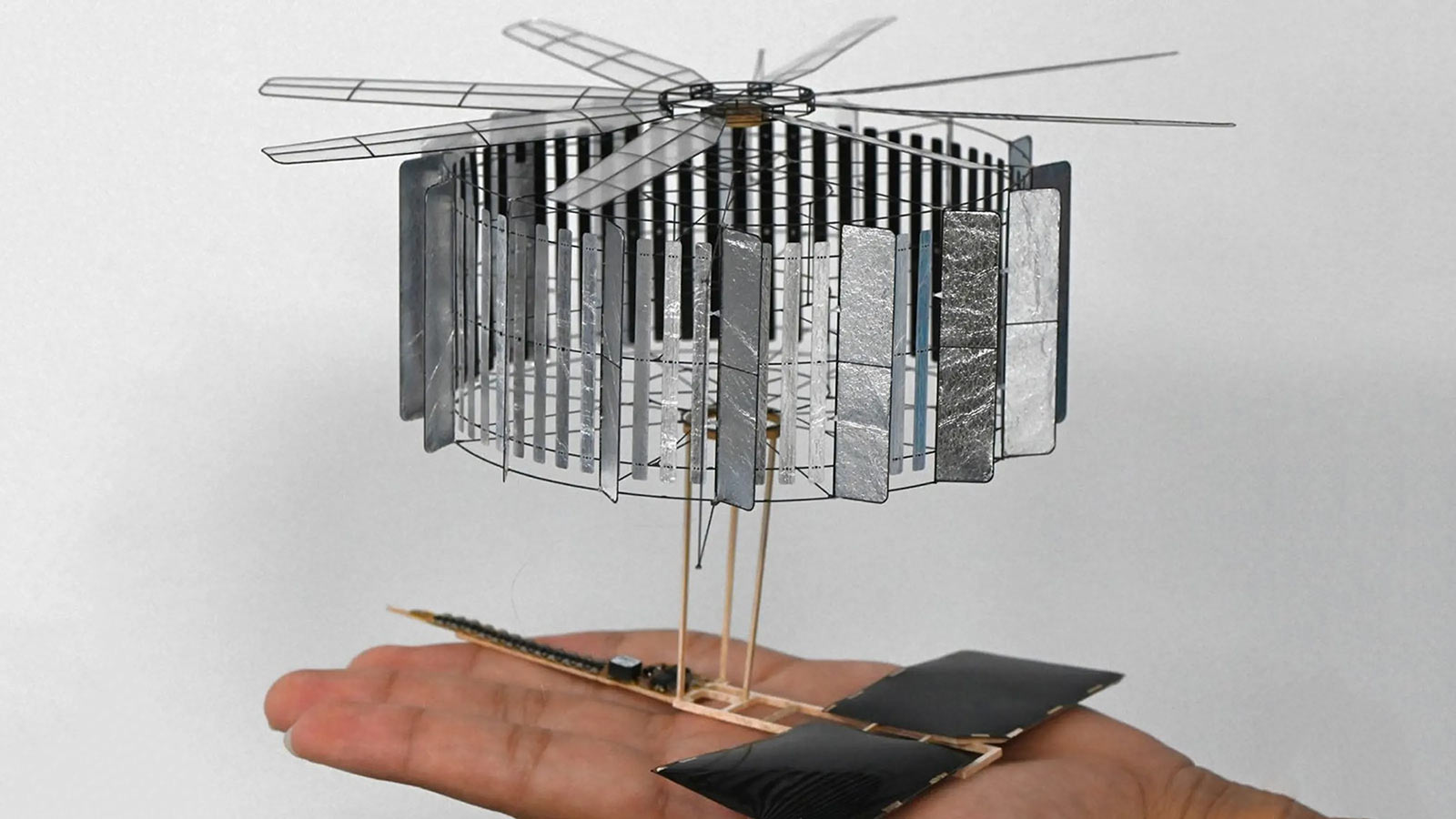New Chinese drone can fly as long as the sun shines — solar-powered device with 200mm wingspan weighs record-breaking 4.21g

Beijing scientists have developed what they claim is the world’s smallest and lightest solar-powered drone. One of the key milestones this 4.21g device with its 200mm wingspan has achieved is being able to fly non-stop during daylight. CoulombFly is also remarkable for being about 10 times smaller and 600 times lighter than the previous smallest sunlight powered drone, reports IEEE Spectrum.
Electrostatic motor technology seems to be the most important differentiating aspect of the CoulombFly design. Previous sunlight-powered drones would use electromagnetic motors, but the efficiency of this type of motor collapses when scaled down to the sizes desired by micro aerial vehicle (MAV) designers. Thus, the miniaturization of solar-powered drones clashed with the bulk and weight their engines required to run efficiently.
An electrostatic motor operates on a different principle and hasn’t really been considered for aerial propulsion before. In this niche MAV motor case, though, the scientists found that the 1.52g electrostatic motor equipped by the CoulombFly delivered between a 200 and 300% lift-to-power efficiency.
Instead of heavy magnets, the electrostatic motor of the CoulombFly features lightweight carbon fiber and aluminum foil slats in nested rings, powering a 200mm propeller. Meanwhile, the 60 x 40mm solar cells use high-power-density thin-film gallium arsenide technology but weigh less than half a gram in total.
In tests the CoulombFly could get airborne in under a second in natural sunlight. The researchers reckon such devices could be used for long-distance aerial reconnaissance, as they can operate continuously as long as daylight persists. Moreover, the current design means that an additional payload of nearly 1.6g could be supported. Therefore a rechargable battery could be installed to extend flight time beyond sunset. The scientists still see plenty of optimization opportunities for the motor, propeller, circuits, and more.

The CoulombFly achievement is impressive, but the researchers behind it see the project as a mere stepping stone to their ultimate goal. They are also working on a prototype drone which is “about the size and weight of a mosquito,” and currently that means it measures 8mm wide and weighs just 9mg.
Sadly, the mosquito-like solar-powered drone can’t stay airborne on its own power yet. “I believe that with the ongoing development of microcircuit technology, we can make this happen,” asserted one of the professors working on the project.
Get Tom's Hardware's best news and in-depth reviews, straight to your inbox.

Mark Tyson is a news editor at Tom's Hardware. He enjoys covering the full breadth of PC tech; from business and semiconductor design to products approaching the edge of reason.
-
Neilbob Reply
And it could use a laser to zap incoming leaves and thistledown.drivinfast247 said:As long as there is zero wind. -
USAFRet Reply
The term "drone" has been massively misused and misunderstood.thisisaname said:Is it a drone if it can not control it's flight?
This is just one in a looong series of remote control aircraft.
The only thing exceptional about this one is the size, and solar panel operation. -
thisisaname Reply
Not sure this even counts as remote control aircraft either considering the only control is turning it off by physically covering the solar panel.USAFRet said:The term "drone" has been massively misused and misunderstood.
This is just one in a looong series of remote control aircraft.
The only thing exceptional about this one is the size, and solar panel operation.
